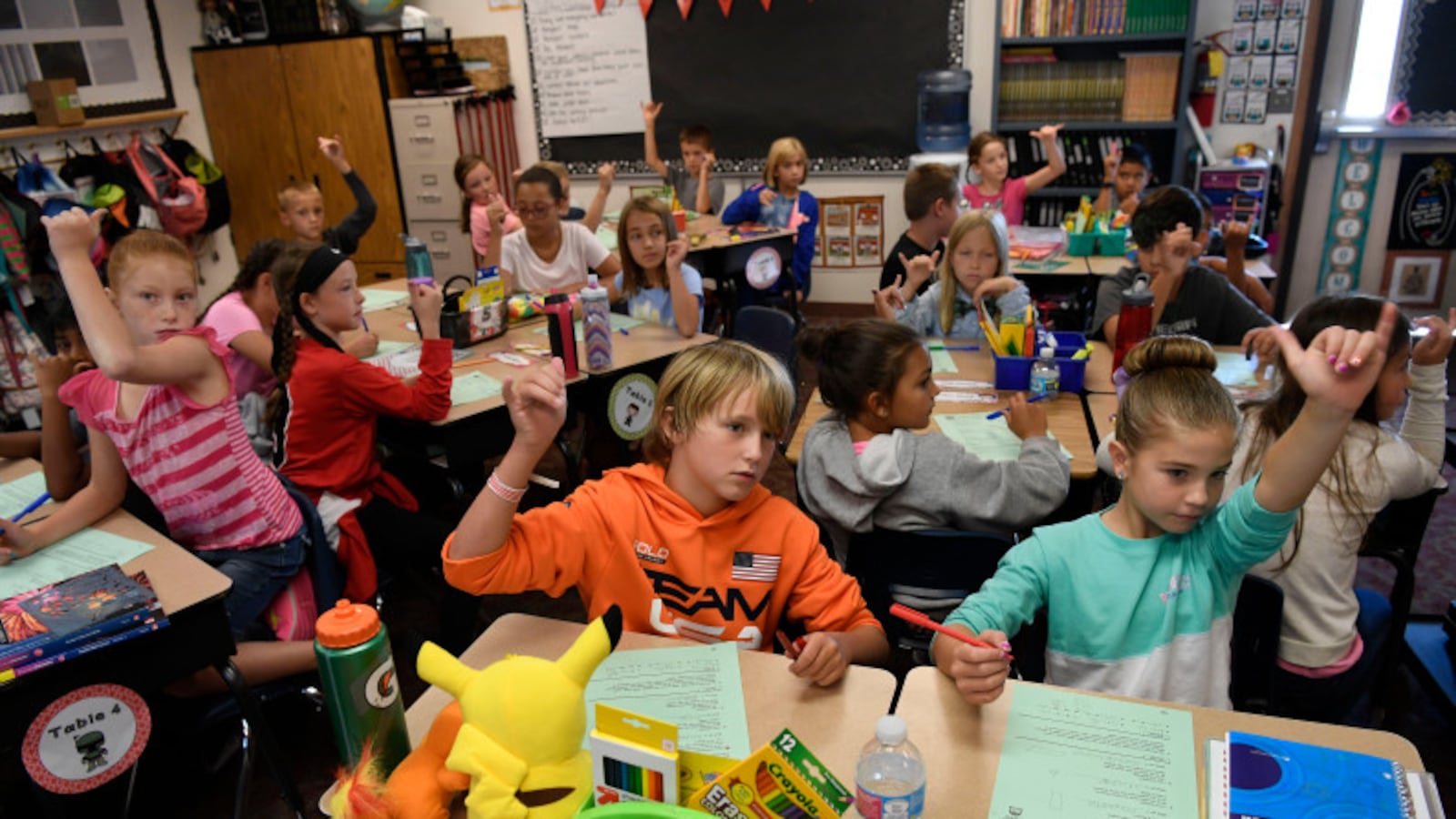Of the more than 40 Colorado school districts that asked voters to pass tax measures for school construction or operating dollars Tuesday, more than half are celebrating their good fortune.
The rest — both large districts such as Jeffco Public Schools and small rural districts such as the 270-student Hanover district near Colorado Springs — are wondering what went wrong.
At the same time, they’re questioning the equity of Colorado’s education funding landscape, in which some districts easily galvanize local voters around school tax measures while others often fall short. The result: major differences in resources depending on where kids live.
“What is worrisome is we see the gap widening,” said Greeley Superintendent Deirdre Pilch, whose district’s mill levy override was defeated on Tuesday.
Choking up at one point, she lamented the 16-year-old textbooks used in some classrooms and the fact that her teaching talent gets sucked away by other districts that can afford to offer higher pay.
Bill Bottoms, the chair of Jeffco’s unsuccessful campaign for a bond and mill levy override, cited the same kinds of frustrations, including the need to replace 250 portable classrooms erected back in the 1970s and 1980s.
But the unmet needs in Jeffco aren’t the only issue. He said the sheer number of Colorado districts requesting financial help from taxpayers shows “a clear picture of what a poor job we’re doing at the state level of adequately funding our K-12 education system … I’ve used the word deplorable and I think that’s the right word.”
Thirty-one districts asked voters to pass bonds and 28 asked for mill levy overrides on Tuesday, according to data compiled by the Colorado School Finance Project.
About two-thirds of the bond efforts were successful and nearly 60 percent of the mill levy overrides — a type of tax increase — were successful. While some victories were scored by large Front Range districts that have long enjoyed strong taxpayer support — including Denver, Cherry Creek and Boulder — there were also successful campaigns in a number of small districts.
About 10 rural districts saw tax measures fail on Tuesday.
Michelle Murphy, director of the Colorado Rural Schools Alliance, gave kudos to districts with winning ballot measures but called the raft of losing campaigns, “frustrating and incredibly disappointing, especially when you take into account how desperate the funding situation is for some of these districts”
“I don’t know what the answer is,” she said.
For Hanover Superintendent Grant Schmidt, the short-term answer is likely a second try at passing a mill levy override next year. Such a measure would raise about $500,000 a year for the tiny district, which he said hasn’t recovered economically from the recession the way many Front Range cities and towns have.
And while he was disappointed that voters rejected the tax measure this year, he wasn’t totally surprised. Two other nearby districts — Colorado Springs 11 and Pueblo 70 — experienced similar defeats on Tuesday.
Among many of the region’s voters, he said there’s an “overall belief in low taxation and small government … Not that I don’t support that but I do believe there’s a point where you have to find where that balance is before it becomes a negative.”
Over the long haul, Schmidt believes that Colorado’s school funding formula should be rewritten and that TABOR — a 1992 ballot measure that put limits on both government spending and revenue collection — needs to be adjusted, too.
Lisa Weil, executive director of the school funding advocacy group Great Education Colorado, believes many school district leaders, even those with winning tax measures, will unite behind such a push.
They might get infusions of new cash now, but Colorado consistently ranks near the bottom of states in per-pupil funding, and budget forecasts don’t offer much hope.
“I think there is momentum for change,” she said. “With each new election cycle, there are more people who are informed and saying, ‘This is not OK. We need a statewide solution.’”

